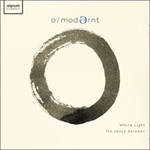
Welcome to Hyperion Records, a British classical label devoted to presenting high-quality recordings of music of all styles and from all periods from the twelfth century to the twenty-first.
Hyperion offers both CDs, and downloads in a number of formats. The site is also available in several languages.
Please use the dropdown buttons to set your preferred options, or use the checkbox to accept the defaults.

| Hugo Ticciati (violin), O/Modernt Chamber Orchestra» More |
The opening of Distant Light, which is built in a single span of music, places Vasks stylistically exactly where his geographical origins are – between Pärt and Lutoslawski. The violin line slowly opens out over a gentle bed of growingly confident string tone, part diatony, part cluster. The strings disappear behind the first of three cadenzas, the basses then taking up a beautiful lament as the soloist soars ecstatically above. A bright-eyed, folk-like dance episode introduces a change of mood and tempo but is abruptly silenced by the second cadenza – which itself snaps to a close as the basses begin another poignant elegy. The third cadenza, with some deliberately ugly sounds, unleashes what one commentator has called ‘aleatory chaos’ before a rather ill-bred waltz stamps it into submission and an extended coda revisits some of the earlier material and lays the music to gentle rest.
from notes by Martin Anderson © 2005
Distant Light se présente sous la forme d’un seul et ample mouvement; dès les premières mesures, Vasks s’inscrit très exactement dans l’esthétique dominante de sa zone géographique d’origine – entre Pärt et Lutoslawski. La phrase du violon s’épanouit lentement sur un délicat tapis de cordes aux sonorités intimistes, tantôt diatoniques, tantôt arrangées en cluster. Les cordes s’évanouissent après la première d’une série de trois cadences, tandis que des basses émerge une superbe complainte au-dessus de laquelle s’élève le soliste, extatique. Un épisode brillant dans l’esprit d’une danse folklorique introduit un changement d’atmosphère et de tempo, mais il est abruptement interrompu par la seconde coda, laquelle s’achève, tout aussi inopinément, lorsque les basses, entament une autre élégie d’une intensité poignante. La troisième cadence, en faisant un usage délibéré de sonorités disgracieuses, génère ce qu’un commentateur à décrit comme «un chaos aléatoire», avant qu’une valse de caractère plutôt trivial ne vienne y mettre de l’ordre; enfin, une coda assez développée fait entendre à nouveau certains des motifs entendus précédemment, et conclut paisiblement la partition.
extrait des notes rédigées par Martin Anderson © 2005
Français: Baudime Jam
Der Anfang von Fernes Licht, das sich in einem einzigen musikalischen Bogen entfaltet, verankert Vasks stilistisch genau dort, wo auch seine geographischen Wurzeln liegen, nämlich zwischen Pärt und Lutoslawski. Die Violinstimme öffnet sich langsam über einem sanften Bett aus zunehmend selbstsicherem Streicherton, teils diatonisch, teils Cluster. Die Streicher verschwinden hinter der ersten der drei Kadenzen. Dann beginnen die Kontrabässe eine wunderschöne Klage, während der Solist ekstatisch darüber schwebt. Eine muntere, volkstümliche, tänzerische Episode leitet einen Stimmungs- und Tempowechsel ein, wird aber abrupt von der zweiten Kadenz unterbrochen – der selber wieder unvermittelt Einhalt geboten wird, wenn die Kontrabässe mit einer weiteren ergreifenden Elegie beginnen. Die dritte Kadenz mit einigen absichtlich hässlichen Klängen entfesselt etwas, was ein Kommentator einmal als ein „aleatorisches Chaos“ beschrieben hat. Daraufhin bringt ein ziemlich unverfrorener Walzer das Geschehen wieder unter Kontrolle. Eine ausgedehnte Koda zieht noch einmal Ausschnitte aus dem vorangegangenen Material heran und bringt die Musik zu einem sanften Abschluss.
aus dem Begleittext von Martin Anderson © 2005
Deutsch: Elke Hockings
 White Light - the space between White Light - the space betweenFrom the Antony Gormley ensō adorning its cover to the final strains of a chamber orchestra raag, the restless shade of contemplative exploration haunts an album which includes seminal works by Vasks and Pärt.» More |

